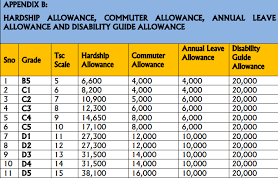TSC Updated House Allowance Per Job Group. One of the primary issues that teachers are considering is the home grant, one of several issues that have plagued Kenya’s education system for a long time.
The Teachers Service Commission just implemented a new system that divides regions into groupings known as “clusters” in order to address the long-standing disparities in house perks.
More information regarding the new home allowance structure and its implications for teachers across the nation can be found in educationboard.co.ke . Areas are split into four categories under the new dwelling allowance scheme.
In order to provide instructors with housing allowances commensurate with the cost of living in their respective locations, the schools are grouped together according to their geographic locations.
Cluster 1: The city of Nairobi
Nairobi, the main city, is in this cluster. It is known for having a pretty high cost of living. The house allowance for teachers in this cluster is the highest, running from 3,850 KES to 6,750 KES per grade.
Cluster 2 includes the cities of Mombasa, Kisumu, and Nakuru, as well as the towns of Nyeri, Eldoret, Thika, Kisii, Malindi, and Kitale.
This group includes other big cities and towns where the cost of living is higher than in the country but lower than in Nairobi.
In this group, house allowances run from 4,500 KES to 10,000 KES.
Cluster 3: Other Former Towns and Cities
In this group are towns and cities that are not big cities and have a reasonable cost of living. House payments for teachers here range from 3,850 KES to 12,800 KES.
Cluster 4: Everywhere Else
Here, in this group of rural and less urbanised areas, house allowances run from 3,850 KES to 21,508 KES.
Additionally, it is important to keep in mind that, compared to the old method, the new house allowance structure gives teachers in different clusters a lot more money.
TSC Updated House Allowance Per Job Group
Grade TSC Scale Cluster 1 (Nairobi City)
Group 2: Group 3 (Other Former Municipalities)
Cluster 4: All Other Places
1 B5 5 6,750 4,500 3,850 3,850
2 C1 6 10,000 7,500 5,800 5,000
3 C2 7 16,500 12,800 9,600 8,133
4 C3 8 28,000 22,000 16,500 14,055
5 C4 9 28,000 22,000 16,500 14,055
6 C5 10 35,000 25,500 18,000 16,184
7 D1 11 45,000 28,000 21,000 18,066
8 D2 12 45,000 28,000 21,000 18,066
9 D3 13 45,000 28,000 21,000 18,066
10 D4 14 45,000 28,000 21,000 18,066
11 D5 15 50,000 35,000 25,000 21,508

Changes to the way teachers across clusters get their TSC housing allowances
Concerns and Implications: The government’s effort to fix the problem of different house payments in different areas is a good one, but it has also been criticised. Teachers’ unions and teachers from different parts of the country are worried about how fair and adequate the new system is.

Here are a few key concerns to be aware of:
Inequity Within Clusters: Considering that living expenses might differ even within a single cluster, some individuals disagree with the notion that locations should be categorized into large clusters. For instance, in Cluster 2, there may be significant differences in the cost of living between Kisumu and Nakuru City.
TSC Updated House Allowance Per Job Group
The living standards of teachers may differ as a result. Variations in the cost of living: The cost of living may vary throughout time. Certain areas may have rapid price increases for housing and other essentials, which may not be adequately reflected in the current system.
Neglected Rural Areas: Teachers in Cluster 4 who work in rural areas continue to face challenges. Some argue that more work has to be done to attract and retain qualified teachers in these locations, even though the current system pays them more money.
Although not yet complete, the new home allowance system is undoubtedly a step in the right direction toward closing the pay disparity that exists between regions for teachers.
For Kenya’s educational system to continue improving, it is imperative that equitable living circumstances for teachers be provided throughout the nation.
